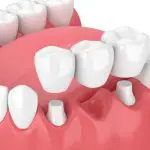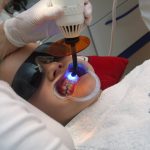Say Goodbye to Gap Teeth: Tips on How to Fix Them Fast

Having a gap in your teeth can often make you feel self-conscious and insecure about your smile. This dental condition, medically referred to as diastema, is quite common and can occur due to various reasons such as genetics, thumb sucking, or gum disease. Fortunately, there are several ways to address this issue and achieve the perfect smile you deserve. From braces and veneers to natural remedies and exercises, this article provides you with tips on how to fix gap teeth fast. One of the most popular and effective ways to treat gap teeth is through orthodontic treatment. Braces are a common and affordable option that can help close gaps and straighten crooked teeth. With advancements in dental technology, there are now various types of braces available such as clear aligners and lingual braces that are discreet and comfortable to wear. Apart from closing gaps, braces also improve your overall dental health by correcting bite issues and reducing the risk of gum disease.
Gap teeth, also known as diastema, refer to the space or gap between two or more teeth, typically the front teeth. This condition can occur naturally, as the jaw bone and teeth develop, or it can be caused by other factors such as a mismatch between the size of the teeth and the jaw bone, missing teeth, or habits such as thumb sucking. While some people may find gap teeth charming or unique, others may feel self-conscious about their appearance. Fortunately, there are several options available to fix gap teeth, ranging from orthodontic treatments to cosmetic procedures.
Having gap teeth can significantly impact a person’s confidence and self-esteem. People with gap teeth often feel self-conscious about their appearance and may avoid smiling or speaking in public. This can lead to social anxiety and a lack of confidence in personal and professional settings. In addition to affecting one’s confidence, gap teeth can also have adverse effects on overall oral health. Food particles can get trapped between teeth, leading to decay and gum disease. Additionally, gaps between teeth can cause misalignment, leading to bite issues and potential jaw problems. It is essential to address gap teeth not only for aesthetic reasons but also for the sake of oral health.
Causes of Gap Teeth

Gap teeth, also known as diastema, is a common dental condition that affects people of all ages. Several factors can cause gap teeth, including genetics, childhood habits, and oral health issues. One of the most common causes of gap teeth is the size of the teeth and the jawbone. When the teeth are too small or the jawbone is too large, there may not be enough space for all of the teeth to fit together properly, resulting in gaps. This condition is often hereditary and can be seen in many family members. Another cause of gap teeth is childhood habits, such as thumb-sucking, using a pacifier, or tongue thrusting. These habits can cause the front teeth to move forward and create gaps between them. Additionally, poor oral health, such as gum disease, can also cause gap teeth as it weakens the supporting tissues of the teeth, leading to tooth loss and gaps. Habits like grinding your teeth or clenching your jaw can also cause gaps by putting pressure on your teeth and shifting them out of position. If you have gap teeth, it’s essential to identify the cause and seek appropriate treatment to avoid further complications.
Genetics plays a significant role in determining the shape and size of our teeth. In fact, the alignment of our teeth is largely determined by our genes, which means that some people may be more prone to gap teeth than others. While there are other factors that can contribute to gaps in teeth, such as thumb sucking, genetics can make some people more susceptible to these issues. However, with advances in orthodontic technology, individuals with gap teeth can now opt for treatment options such as braces, aligners or veneers to achieve a flawless smile.
Thumbsucking during childhood is a common habit among young children. While it may provide comfort and relaxation for the child, it can also result in dental problems such as gap teeth. The pressure from thumbsucking can push the teeth forward, causing gaps to form between them. It’s important for parents to discourage this habit early on, as it can be difficult to break later in life. Providing alternative forms of comfort, such as a stuffed animal or blanket, can help redirect a child’s thumbsucking behavior. Additionally, seeking guidance from a dentist or orthodontist can ensure that any dental issues caused by thumbsucking are addressed and treated promptly.
Tongue thrusting is a habit that occurs when a person pushes their tongue forward against their front teeth while swallowing, speaking, or even at rest. This habit can put excessive pressure on the teeth, causing them to shift or become misaligned, leading to gaps between teeth. Tongue thrusting can also affect speech and cause lisping or other speech impediments. To fix this habit, individuals can work with a speech therapist to retrain their tongue muscles and adopt proper swallowing techniques. Additionally, orthodontic treatment may be necessary to correct any misalignments or gaps caused by tongue thrusting.
Periodontal disease is a serious dental condition that affects the gums and bones that support the teeth. It is caused by the accumulation of plaque and bacteria, which can lead to inflammation and infection. Symptoms of periodontal disease include swollen, bleeding gums, bad breath, and tooth loss. Treatment options for periodontal disease include scaling and root planing, antibiotics, and surgery in severe cases. It is important to practice good oral hygiene habits, such as brushing twice a day and flossing regularly, to prevent periodontal disease from developing. If left untreated, it can lead to serious health problems such as heart disease and diabetes.
Teeth grinding, also known as bruxism, is a common problem that affects many people. It is the habit of clenching or grinding the teeth, often during sleep. This can lead to a range of problems, including worn down teeth, jaw pain, headaches, and even tooth loss in severe cases. While the exact causes of bruxism are not fully understood, it is believed to be related to stress, anxiety, and an abnormal bite. Treatment options include wearing a mouthguard at night, stress management techniques, and dental procedures to correct any underlying bite issues. It’s important to address teeth grinding early on to prevent any further damage to teeth and promote overall oral health.
Treatment Options
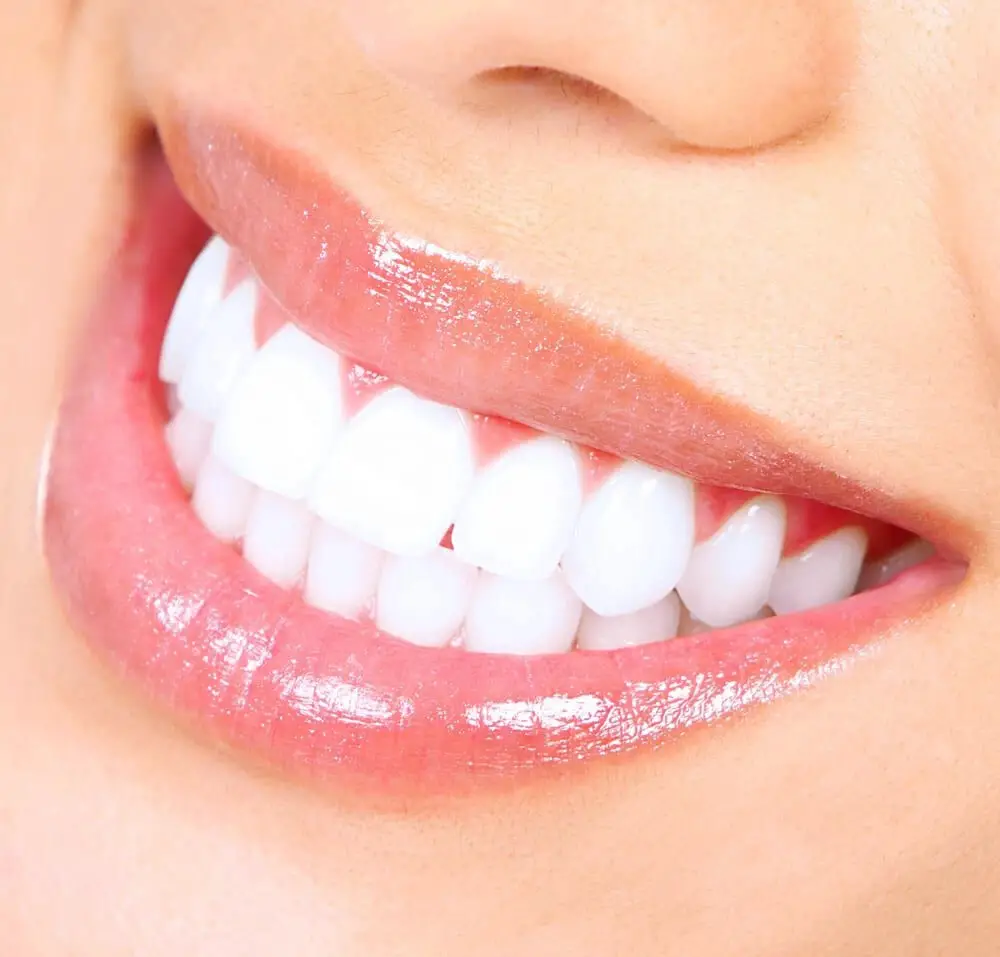
There are several treatment options available for fixing gap teeth, depending on the severity of the condition. One of the most popular options is dental bonding, which involves applying a tooth-colored resin onto the teeth to fill in gaps and improve their appearance. This procedure is non-invasive and can be completed in just one visit to the dentist. If the gaps are larger or more severe, orthodontic treatment may be necessary. Braces or clear aligners can be used to gradually shift the teeth into their proper position, closing the gaps in the process. This treatment option may take longer than bonding, but can also address other orthodontic issues like crooked or crowded teeth. Another treatment option for gap teeth is veneers. These are thin, custom-made shells that are placed over the front of the teeth to cover up gaps and other cosmetic imperfections. Veneers are a more permanent solution than bonding, but also require more preparation and a longer treatment time. In some cases, a combination of treatments may be recommended to achieve the best results. It’s important to consult with a qualified dentist or orthodontist to determine which treatment option is right for your specific needs and goals. With the right treatment, you can say goodbye to gap teeth and enjoy a more confident, beautiful smile.
Braces are an effective orthodontic treatment used to correct dental misalignments such as gaps, crooked teeth, and overbites. They consist of brackets, wires, and rubber bands that work together to slowly move teeth into the desired position. Braces come in various types, including metal, ceramic, and clear aligners, each with its own advantages and disadvantages. Although braces can be uncomfortable and require frequent adjustments, the end result is a beautiful, healthy smile that boosts self-confidence and improves overall oral health. With proper care and maintenance, braces can fix gap teeth fast and provide long-lasting results.
Invisalign is a modern orthodontic treatment that can help fix gap teeth without the use of traditional metal braces. It uses a series of clear and removable aligners that are custom-made to fit your teeth. The aligners gradually move your teeth into the desired position, with each set being worn for about two weeks before being replaced with the next set. Invisalign is a popular choice for those who want a discreet and comfortable way to straighten their teeth, as the aligners are virtually invisible and can be easily removed for eating, brushing, and flossing. Additionally, Invisalign treatment can often be completed in a shorter amount of time than traditional braces, making it a convenient option for those who want to fix their gap teeth fast.
Dental bonding is a cosmetic dentistry procedure that involves the application of a tooth-colored resin material to the teeth using adhesives and a special light. This procedure is often used to fix small gaps between teeth, as well as to repair minor chips, cracks, and discoloration. The bonding material is carefully sculpted and shaped to match the surrounding teeth, creating a natural-looking and seamless result. The procedure is quick, painless, and can often be completed in just one visit to the dentist. With proper care, dental bonding can last for several years, making it a popular and affordable option for those looking to improve the appearance of their smile.
Veneers are a popular cosmetic dental solution for those looking to transform their smile. These thin, custom-made shells are placed over the front of the teeth to improve their appearance. Veneers are ideal for fixing gap teeth as they can fill in the spaces between teeth, giving the illusion of a straighter smile. They can also be used to cover up discolored or chipped teeth, and are highly resistant to staining. The process of getting veneers typically involves two visits to the dentist, and the results can last for many years with proper care. If you’re looking for a fast and effective way to fix gap teeth, veneers may be the perfect solution for you.
Retainers are orthodontic devices that are commonly used in the post-braces phase of dental treatment. They are designed to hold teeth in their new positions after braces have been removed, preventing them from relapsing into their previous positions. Retainers can be made of different materials such as metal, plastic, or a combination of both. They can be removable or fixed, depending on the patient’s needs. Removable retainers are generally more comfortable to wear, but fixed retainers are more effective in preventing relapse. It’s important to wear retainers as directed by your orthodontist to maintain the results of your orthodontic treatment and keep your teeth in their new, beautiful position.
Home Remedies
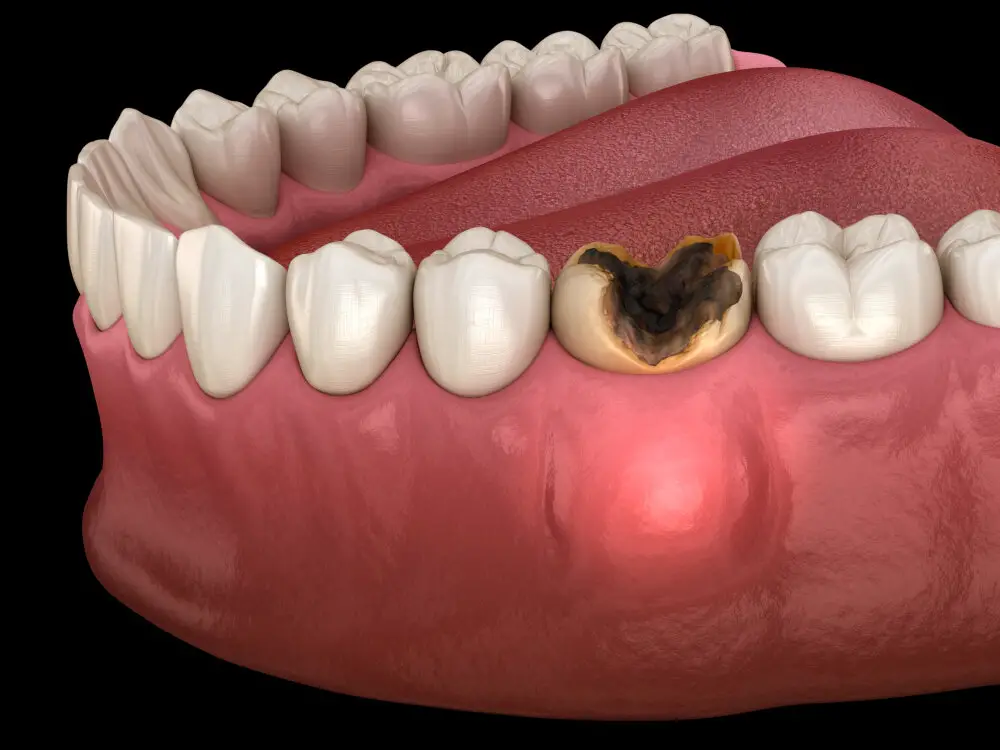
Home remedies are an excellent option for those who are looking for a quick and cost-effective way to fix gap teeth. One of the most popular home remedies involves the use of dental floss. By taking a piece of dental floss and tying it around the teeth that have gaps, you can gradually compress them together over time. This method is effective, but it requires patience and consistency, as it may take several weeks or months to see results. Another effective home remedy for fixing gap teeth is oil pulling. This ancient practice involves swishing oil around in your mouth for 10-20 minutes each day. Coconut oil is a popular choice for oil pulling, as it has antibacterial properties that can help prevent tooth decay and gum disease. Oil pulling can also help to reduce inflammation in the mouth, which can be beneficial for those with gap teeth. While not a quick fix, incorporating oil pulling into your daily routine can help to improve the overall health and appearance of your teeth.
Closing gaps between teeth with rubber bands is a simple and cost-effective solution that can help bring back your smile’s radiance. Rubber bands, also known as orthodontic elastics, are thin and stretchy bands that are placed around teeth to close gaps. These bands work by applying constant pressure to the teeth, gradually pulling them together. Depending on the size of the gap, the rubber bands may be worn for a few weeks to a few months. Some people may experience mild discomfort, especially during the first few days of wearing the bands, but this usually subsides quickly. With the help of rubber bands and proper dental care, you can enjoy a beautiful and confident smile in no time.
Oil pulling is an ancient Ayurvedic technique that involves swishing oil in your mouth for 10-20 minutes daily. Coconut, sesame, or sunflower oil can be used for this process. The oil is believed to pull out toxins and bacteria from the mouth, which can promote oral health and hygiene. While there is limited scientific evidence to support the benefits of oil pulling, some studies suggest that it can reduce plaque, gingivitis, and bad breath. Additionally, some people claim that oil pulling can whiten teeth and improve overall oral health. However, it is important to note that oil pulling should not replace regular brushing and flossing, and it is not a substitute for professional dental care.
Activated charcoal has become a popular ingredient in many health and beauty products due to its ability to absorb impurities and toxins. In terms of dental care, activated charcoal has been touted as a natural teeth whitener, as it can effectively remove surface stains and discoloration. It works by binding to the molecules that cause staining and lifting them away from the teeth. However, it’s important to use activated charcoal with caution as it can be abrasive and potentially damage the enamel if used too frequently or aggressively. It’s best to consult with a dentist before using activated charcoal as a teeth whitening method.
The straw technique is an easy and effective way to fix gap teeth. It involves using a small piece of orthodontic rubber band or dental floss to tie a knot around the gap between the two teeth. Then, inserting a small plastic straw between the teeth to provide pressure and gradually close the gap. This technique can take several weeks to show results, but it is a non-invasive and affordable option for those who want to fix their gap teeth without undergoing any major dental procedures. It is important to note that this technique should only be attempted with the guidance of a dental professional to avoid any potential risks or complications.
Prevention
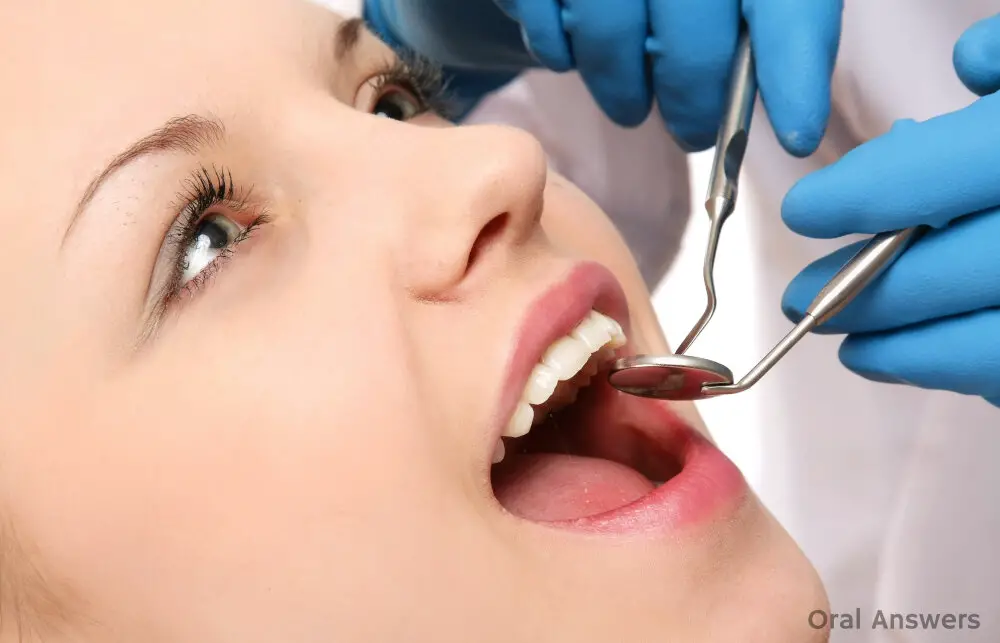
Prevention is the key to maintaining a healthy and beautiful smile, especially when it comes to fixing gap teeth. One of the most effective ways to prevent gap teeth is by maintaining good oral hygiene. Regular brushing, flossing, and dental check-ups can help keep your teeth healthy and prevent gaps from forming. Additionally, avoiding sugary and acidic foods can also help prevent tooth decay and gum disease, which can lead to gaps and other dental problems. Another way to prevent gap teeth is to wear a mouthguard while playing sports or engaging in other physical activities. This can help prevent injuries to the teeth and jaw that could lead to gaps or other dental problems. Additionally, avoiding bad habits like nail-biting and teeth-grinding can also help prevent gaps and other dental issues. By taking these preventive measures, you can help maintain a healthy and beautiful smile for years to come.
Maintaining proper oral hygiene is vital in preventing gap teeth and other dental problems. Brush your teeth at least twice daily, using fluoride toothpaste and a soft-bristled brush. Flossing between your teeth regularly helps remove any food particles that may cause decay. Avoid sugary and acidic foods and drinks that can harm your teeth. Regularly visit your dentist for checkups and cleanings twice a year. In addition, consider using mouthwash to rinse your mouth, killing bacteria and freshening your breath. By following these simple but essential oral hygiene practices, you can prevent unwanted gaps between your teeth and maintain a healthy, beautiful smile.
Regular dental checkups are an essential part of maintaining good oral health and preventing gap teeth. Visiting the dentist at least twice a year enables early detection and treatment of dental issues such as cavities, gum disease, and misaligned teeth that can cause gaps. During the checkups, the dentist will clean your teeth, remove any plaque or tartar buildup and examine your mouth for any abnormalities. This will ensure that any potential problems are addressed before they become more severe, reducing the likelihood of developing gap teeth. Regular dental checkups also provide an opportunity for patients to discuss any concerns they may have about their oral health and receive advice on how to best care for their teeth and gums. By prioritizing regular dental checkups, you can maintain a healthy and beautiful smile and avoid the need for more extensive dental work in the future.
Thumbsucking is a common habit among children which can lead to dental problems such as gap teeth. This habit can cause the front teeth to protrude and move apart, creating gaps between them. In order to avoid gap teeth, parents should discourage thumbsucking as early as possible. They can do this by offering alternative comfort measures such as a pacifier or comforting stuffed toy, and by praising children when they refrain from thumbsucking. If the habit persists, parents can consult with a dentist or orthodontist for further advice and treatment options. It is important to address thumbsucking early on to prevent the development of more serious dental issues in the future.
Tongue thrusting, also known as reverse swallowing, can be a significant contributor to gap teeth. It is a habit where the tongue pushes forward against the front teeth while swallowing, speaking, or even at rest. This constant pressure can cause the teeth to shift, resulting in gaps between them. To stop tongue thrusting, it is essential to identify the triggers and work on correcting the habit. Techniques such as keeping the tongue behind the teeth, practicing proper swallowing techniques, and doing tongue exercises can help break the habit over time. Consulting with a dental professional can also provide additional guidance and treatment options to correct any dental issues caused by tongue thrusting.
If you’re looking to fix your gap teeth fast, one of the best things you can do is wear a mouthguard. Mouthguards are typically worn during physical activities like sports to protect your teeth from damage. However, they can also be useful for fixing gap teeth. Wearing a mouthguard can help to apply pressure to your teeth and shift them into the correct position. Over time, you may start to notice that your gap is closing up and your teeth are starting to look more aligned. Mouthguards can be purchased at most sporting goods stores, and they come in a variety of sizes and styles to fit your needs. So, if you’re looking for a simple and effective way to fix your gap teeth, give wearing a mouthguard a try!
Gap teeth, also known as diastema, are spaces between two or more teeth that are larger than normal. This condition can be caused by various factors, such as genetics, thumb sucking, and gum disease. While some people may find gap teeth to be endearing, others may feel self-conscious about their smile. Fortunately, there are several treatment options available for those who wish to correct this issue. Orthodontic treatments, such as braces or clear aligners, can help shift teeth into their proper positions and close the gaps. Dental bonding, veneers, or crowns can also be used to close gaps and improve the appearance of teeth. It is important to consult with a dental professional to determine the best treatment option for your individual needs and goals.
When it comes to fixing gap teeth, seeking professional help is of utmost importance. While there are various home remedies and over-the-counter solutions available, only a licensed dentist can provide you with the best and safest treatment options. Attempting to fix gap teeth on your own can lead to irreversible damage or even worsen the gap. A dentist can accurately diagnose the cause of your gap teeth and create a personalized treatment plan that fits your specific needs. Additionally, seeking professional help ensures that your treatment is carried out in a sterile and safe environment, reducing the risk of complications. Don’t hesitate to reach out to a qualified dentist to help you achieve the perfect smile you deserve!
Gap teeth can be an aesthetic concern for many people, and taking preventive measures can help avoid this issue in the future. One of the most effective ways to prevent gaps in your teeth is to maintain good oral hygiene habits, such as brushing and flossing regularly. Additionally, visiting a dentist for regular check-ups and cleanings can also help detect and prevent any potential gaps from forming. Wearing a mouthguard while playing sports can prevent tooth damage, which can also lead to gap teeth. Lastly, avoiding habits such as nail-biting or using teeth as tools can prevent unnecessary pressure on the teeth, which can cause gaps to form over time. By taking these preventive measures, you can reduce the likelihood of having to deal with gap teeth in the future and maintain a beautiful, healthy smile.
Conclusion
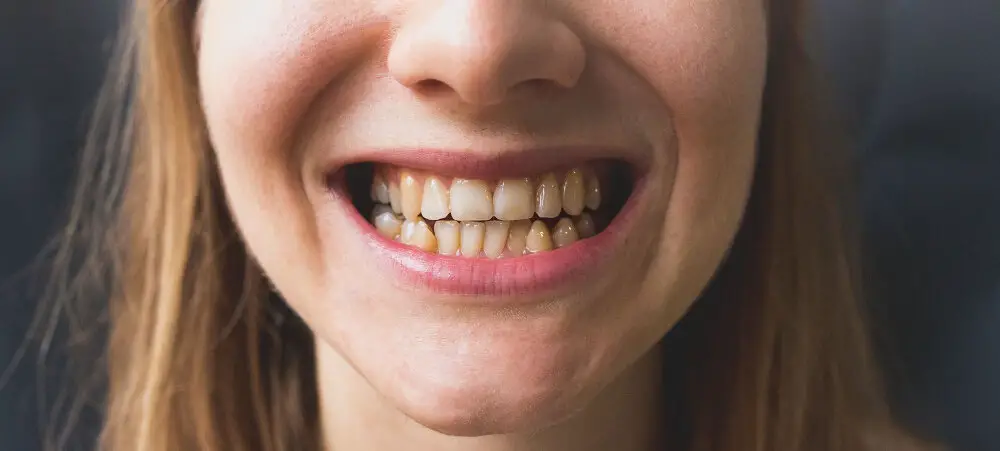
In conclusion, having gap teeth can cause self-consciousness and can affect one’s confidence. However, there are several options available to fix them quickly. From orthodontic treatments like braces, aligners, and retainers to cosmetic procedures like veneers and bonding, there is a solution for everyone. It is important to consult with a dental professional to determine which option is best suited for one’s individual needs. With the right treatment, saying goodbye to gap teeth is possible, and one can achieve a beautiful and confident smile.

